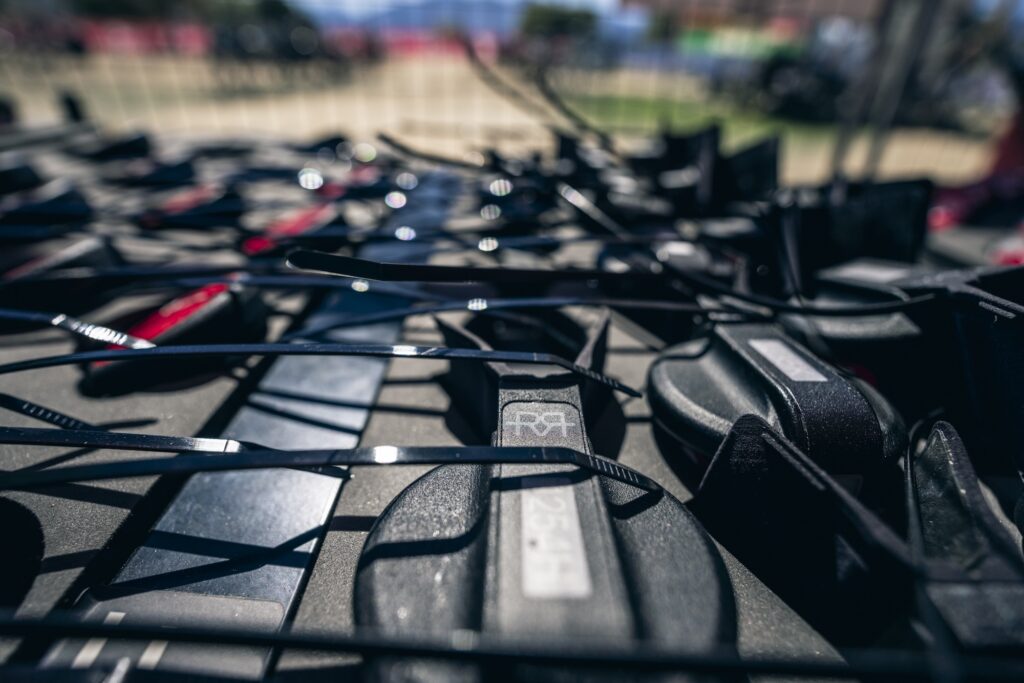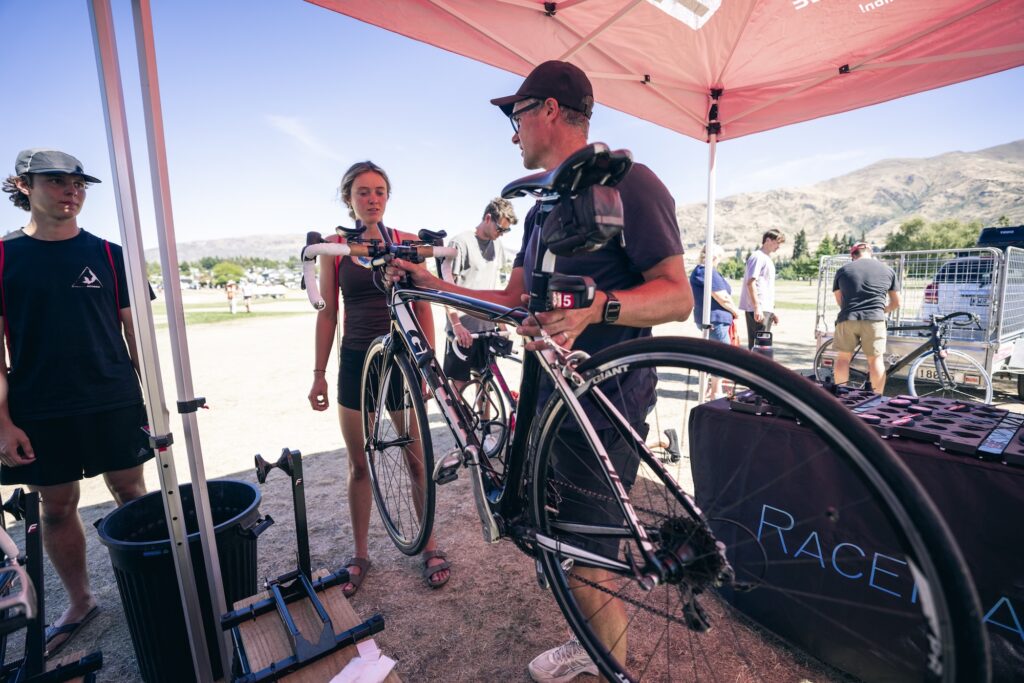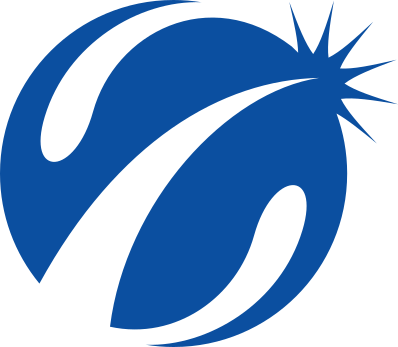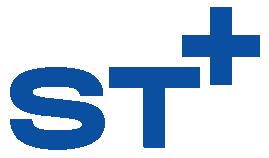Is Draft-Detection Technology Ready for Age Group Racing?

We caught up James Elvery, one of the founders of the draft-detection technology company Race Ranger, at the IRONMAN 70.3 World Championships in New Zealand last December, and reported on the company’s plan to test its product with age group athletes at Challenge Wanaka.
Race Ranger Moves to Age Group Racing at Challenge Wanaka
Elvery provided some notes after this weekend’s race in Wanaka, where 270 age group competitors at the half-distance race on New Zealand’s South Island. (A complete aside – Challenge Wanaka is supposed to be one of the most spectacular venues on the planet. I know, that has nothing to do with age-group drafting … just saying.)
“Something we wanted to get out of the trial was hands-on experience with age grouper bikes, and to understand the subtle differences between them and the pros,” Elvery reported. “It’s one thing to look at these bikes in transition areas, quite another to physically fit units to them. Of the 270 athletes that used the system, we encountered just one bike we weren’t able to mount a rear unit to. In this case it was a particularly small frame size Cervelo, and the whole rear seatpost area was taken up by the athlete’s rear water bottle, which was a seat-post mounted system. If they had switched this to a saddle-rails mount system or similar, this would have freed up the space we needed. More research is needed in this area, but it was a very encouraging experience.”
Elvery reports that the feedback he received was positive, and the reaction from the Race Ranger Instagram post from the weekend would appear to confirm that fact.
“Love it, took the guessing game out of how close and when it was time to pull trigger and pass,” katiesmitzies commented.
It wasn’t just athletes who provided Elvery with positive feedback from the weekend’s racing – the Triathlon New Zealand officials on motorbikes were happy to have the feedback as well.
“The key learning for me personally was that athletes across the spectrum of experience and ability levels all seemed to be using or at least making an effort to use the lights as intended,” Elvery wrote. “I had gone in with a theory that the ‘average’ age grouper, who isn’t particularly serious / super competitive, but who might be more concerned with getting to the finish, having a good time and completing a personal fitness challenge – that they might not be that interested / see the value in having a system to prevent drafting. My thinking was that for this group there wouldn’t be much perceived value in the anti-drafting aspect. But my impression now is that this didn’t appear to be the case. We saw from the roadside that athletes throughout the field were actively using the system as intended.”
Race Ranger Future

Despite the success of the test in Wanaka, we’re not likely to see Race Ranger units at more events in the near future. The company is in the process of raising more money to pay for more development and, one would assume, more units, in order to build out the viability for age-group usage. We will see the units used at “a full pro athlete calendar of approximately 40 of the highest level events, much like we did in 2024, with some modest growth,” Elvery wrote.
The goal remains to scale the system to be able to work with over 3,000 athletes on a single day, though. To do that, Elvery says that Race Ranger will have to reduce “pain points” that will arise as the system is scaled to those kind of numbers. Those include:
- Making the system really easy to install so “athletes can fit the devices to their bikes themselves.” The goal would be for athletes to take the devices back after packet pick-up.
- Reducing “the system to a single (rear) unit.”
- Adding cellular connection in order to provide live tracking and the ability to monitor the units remotely.
- “Completing the connection to the technical officials so that can see which athletes are the ‘worst’ offending drafters on the course …”
- Some of those features might be rolled out within the pro races this year, too.
So, while the short answer to my headline question is “no,” Race Ranger is getting closer to becoming a realistic possibility for age-group racing. Whether or not racers, and race organizers, are ready to embrace the technology (and presumably the added expense) is another question. It’s not hard to argue that Race Ranger can make races fairer and safer, so if the costs can be kept down, one would imagine athletes will accept adding a draft-detecting device to their bikes the same way they’re comfortable throwing a timing chip around their ankles. At least that’s what Elvery and the crew from Race Ranger are hoping for, anyway.




Great reel on RR reflections post-Wanaka for those that like video as well as reading script:
https://www.instagram.com/p/DGbocokKrew/
And (fun fact) Elvery lives there.